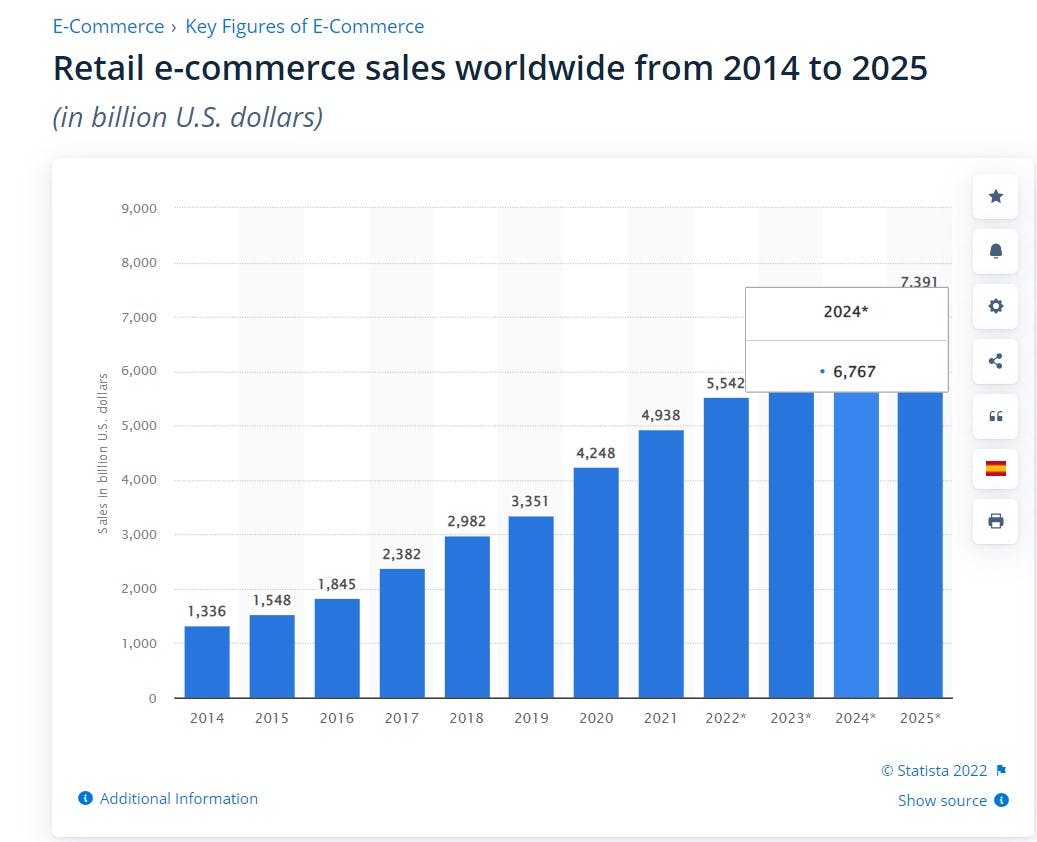Top 6 Ecommerce Business Models And Strategies
What is an ecommerce business model?
If you're a business owner, setting up your ecommerce store online is the ideal approach to promote your products and build a solid customer base.
Before choosing the best e-commerce model for your company, identify two things. It would help if you first decide who you'll sell to before deciding how to position what you have to offer. Create your e-commerce business strategy next. This will detail how you will draw clients and interact with them. Consider your delivery architecture.
We have thoroughly outlined the advantages of each e-commerce business model in this article, making it extremely simple for you to choose.
1. Business-to-Business (B2B)
Setting up a B2B strategy is your best option if the nature of your goods or services is focused on satisfying the demands of enterprises. This model emphasizes networking and outreach, and large advertising budgets are of little use.
B2B sale transactions have a longer cycle but a more significant average order value and frequent recurrences. Since you'll be selling in bulk through B2B, you'll need substantial investment funds. Software e-commerce behemoths like HubSpot, Salesforce, Survey Monkey, etc., use the concept.
If your firm is into marketing to other businesses and you have the resources to have a steady supply of goods in large quantities, you can pick the B2B model.
2. Business-to-consumer (B2C)
The e-commerce B2C business model is your best option if your company wants to sell directly to consumers. B2C business models are used by organizations like Alibaba, Amazon, Walmart, and more.
You must set up an online store and sell your products on the website. B2C also includes services in addition to products. B2C entrepreneurs have used technology, such as mobile applications, native advertising, and retargeting to promote directly to their consumers while improving their quality of life.
3. Consumer-to-business (C2B)
C2B firms enable people to offer products and services to businesses.
In this e-commerce paradigm, a website can enable users to publish jobs and request company quotes. Affiliate marketing services would also be classified as C2B. Freelancers in the C2B industry perform tasks given to them by their clients/customers. These clients tend to be businesses, whereas freelancers are frequently individuals. Consider C2B as a sole proprietorship that caters to larger enterprises.
This business strategy includes reverse auction websites, freelancing markets, and affiliate marketing.
4. Consumer-to-consumer (C2C)
A C2C company, sometimes known as an online marketplace, links customers to trade products and services and generates revenue by assessing transaction or listing fees.
In the early years of the internet, companies like Craigslist and eBay led the way with this approach. C2C firms profit from the motivated customers and sellers who drive their growth, but they also confront significant challenges with quality assurance and technological upkeep.
5. Business-to-government (B2G)
If a company advertises its products to government organizations as part of a business strategy, it's called a business-to-government (B2G) business model. You need to submit government contract bids in this e-commerce business model. Governments post requests for proposals, and e-commerce companies subsequently offer bids for those projects. A government organization wouldn't visit your e-commerce website to make a purchase. However, certain local government entities make an exemption depending on their requirements.
6. Business-to-business-to-consumer (B2B2C)
B2B2C ecommerce is when a firm sells goods to another business, then sells those goods to consumers online. This kind of ecommerce business strategy involves three partners. Suppose you decide to follow it, for instance. In that case, you will need to join another company before selling that company's items and paying the partner a commission for each sale—for example, Amazon, the App Store, Google play store, and more.
Owners of e-commerce businesses select this business strategy primarily for gaining new clients. This occurs because, even though customers are already aware of the partner's items, they cannot buy from them online owing to restrictions like geography and expensive delivery charges, among other things.
How to Choose Your Ecommerce Business Model?
Before making a decision, it's crucial to ask a few fundamental questions. We have a few examples for you:
- What will you sell, and how much will you charge?
- Will you market a single product or a variety of goods?
- Who are you designing this for? What demographic do you wish to sell to?
- What would your target market or future clients want? What will they anticipate?
- On what criteria are you going to compete? (cost, quality, choice, service, value)
You can choose which ecommerce business model would work best for your online store by answering the questions listed above.
Strategies To Promote Your Ecommerce Business
In 2021, retail e-commerce sales amounted to approximately 4.9 trillion U.S. dollars worldwide. This figure is forecast to grow by 50 percent over the next four years, reaching about 7.4 trillion dollars by 2025. (Statista)

These numbers are a blatant indicator of how profitable operating an online ecommerce store can be. However, it may also indicate how intense the rivalry is in the ecommerce market.
Here are our top six e-commerce tactics to boost sales for your small business:
- include cutting-edge product filtration
- feature unique products
- include more payment choices
- offer discounts
- make use of social proof
- implement loyalty programs
Wrapping up
Though planning is crucial, creativity doesn't occur in a vacuum. It's time to launch your solution into the market and start making adjustments to your company based on the feedback you get.
E-commerce appears to have a better future than ever. Due to the COVID-19 pandemic, many make their purchases online rather than in person. The above steps increase sales and grab more of the e-commerce pie.
What's stopping you now?
